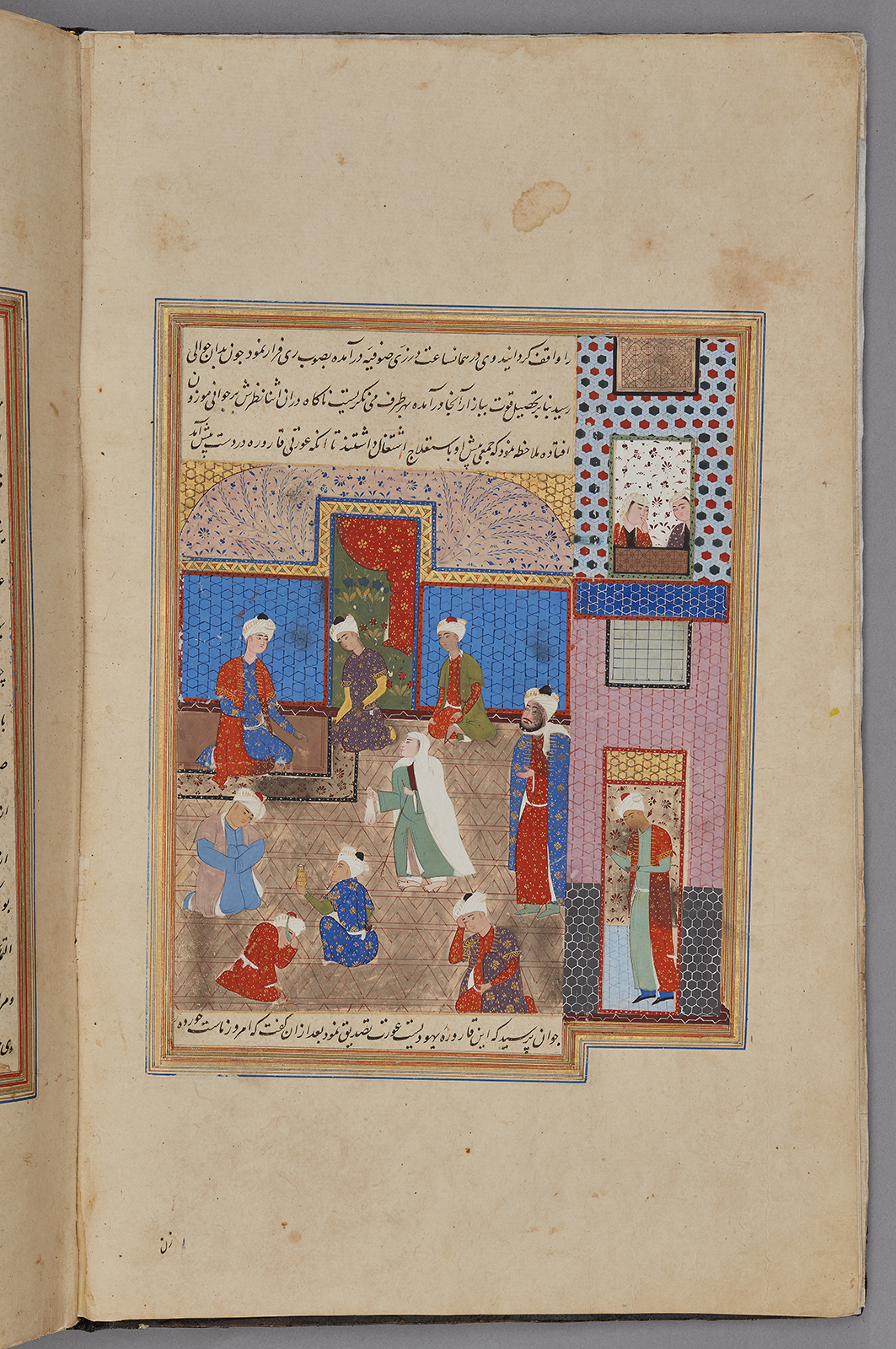Click on the image to zoom
Avicenna observes a healer, Folio from a manuscript of Nigaristan
- Accession Number:AKM272.f8v
- Creator:Author: Ahmad b. Muhammad Ghaffari, Persian, died 1567 Scribe: Ahmad al-Shirazi
- Place:Iran, Shiraz (probably)
- Dimensions:38.7 cm × 25 cm × 6.4 cm
- Date:1573-74 CE/980 AH/AH 980
- Materials and Technique:Ink, opaque watercolour, and gold on paper
The miniature painting "Avicenna observes a healer" is from an intact manuscript of Kitab-i Nigaristan, a collection of anecdotes and historical incidents written in prose by the historian and scholar Ahmad Muhammad Ghaffari (1504–1567/68) of Kashan in 1551–2. This illustrated manuscript, dated 1573, was probably produced in a Shiraz workshop.
See AKM272 for more information about the manuscript and links to the other illustrations.
Further Reading
This miniature painting depicts both a view into a room and the façade of the building containing that room. The composition of interior illustrations throughout the Nigaristan follows the same formula. It also generally shows a similar spatial division: a main room situated between two text boxes and a side scene that mostly depicts the façade of the same room.
In the left part of the illustration, a person kneels on a rug in a room under an arcade and other figures are circled around him. Shifting perspective to the façade of that same two-storey building, the right side of the illustration depicts two females looking out of the second-storey window. On the lower storey, a person is standing at the door.
The text depicts the moment when Avicenna (an 11th-century vizier and court physician) sees a healer in Bazar as he is surrounded by a group of people. The healer can predict many details from the people surrounding him, and so he also recognizes Avicenna and predicts his falling from grace as he loses his position at the court in Isfahan and moves to Rayy. These textual details suggest that the bearded figure standing at the door on the right side of the painting represents Avicenna.
- Elika Palenzona-Djalili
Note: This online resource is reviewed and updated on an ongoing basis. We are committed to improving this information and will revise and update knowledge about this object as it becomes available.


